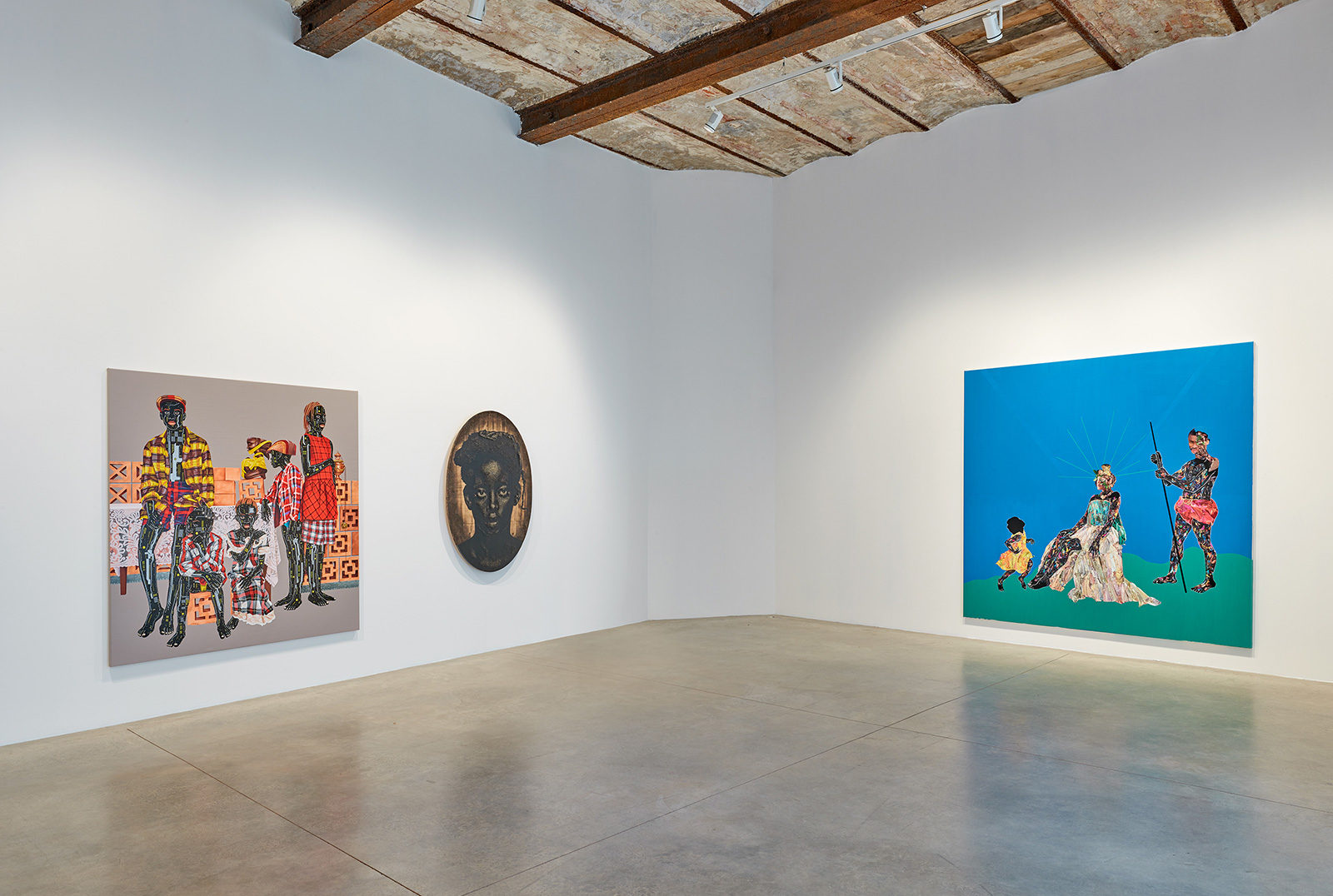
Zidoun-Bossuyt Gallery is pleased to announce DIALOGUES, a group exhibition curated by Eddy Kamuanga in Luxembourg. With works by Vitshois Mwilambwe Bondo, Eddy Kamuanga, Gosette Lubondo and Alexis Peskine.
PRESS RELEASE
Vitshois, Eddy, Gosette, Alexis. In that order. Not in order of greatness, because the results of their artistic approach cannot be compared, but rather the order in which I became aware of them during my travels, which I started almost 10 years ago when I left Kinshasa. It all started with an encounter, with Vitshois Mwilambwe Bondo. An uncompromising visionary, his desire to achieve aligns with his wish to give the Democratic Republic of Congo its place in the contemporary art world. In his footsteps, a young, determined Eddy Kamuanga was already confidently painting on the banks of the Congo River. Just where Vitshois Mwilambwe laid the foundations of his Kin ArtStudio. So, that was the beginning. Faced with a pool of artists, each more promising than the next, I was naturally drawn back to Kinshasa a few years later. There, I discovered Gosette Lubondo, whose Imaginary Trip series was already striking. Without knowing it, with an admiring and complicit eye, I witnessed the prologue to their artistic success. Let’s move on, though the tangents to this story are well worth listening to, especially as they bring it all together for this collective exhibition.
The Zidoun-Bossuyt gallery, under the impetus of Eddy Kamuanga, presents Dialogues. It is significant to see Alexis Peskine there, who, far from being an unknown, is a guest of honour in this crossroads of views and creation(s). What began as an irresistible ambition to emerge as Congolese and African artists is confirmed through this exhibition. Today, this emergence is global, reflected in the prolific production of artists from Africa and its diasporas. The gallery has turned its walls into a testimony to this. The time is ripe for exchange and self-affirmation. What does the association of the works presented here reflect? Once the link has been made between their respective trajectories, their approach to figuration, perspective and composition all come together to focus on identity. A point on which this generation of artists seems to want to linger. Dialogues shows a panoply of physiognomies, behaviours and states of mind. But not only that. We can detect a creative impulse and an aesthetic that demand dialogue.
This project is an opportunity to bring together four artists who have a singular approach to history and the present. Although the landscapes that inspire them differ, Vitshois Mwilambwe, Gosette Lubondo, Alexis Peskine and Eddy Kamuanga share a common vision, a concern for justice and reparation, and the dialogue that this implies. Through their work, they convey emotions that create an inevitable debate. Gosette Lubondo interacts with abandoned spaces through her photographic settings to better question the fragility of power and the relationship with time, which have damaged the identity of these places. This heritage is an essential component of society. Alexis Peskine, with his large-scale portraits of the African diaspora, creates a dialogue with his African roots, hammering nails and gold into wood stained with coffee, mud and other materials. The figurative and visual result, through the application of nails, is reminiscent of the energetic Nkisi (Kongo) power figures. With his paintings, Eddy Kamuanga attempts to dialogue with an unjust past in order to better penetrate the grey areas of the present. Vitshois Mwilambwe, with his paintings and collages on canvas, tackles the issues of the destruction of the image of colonial representation, giving life to emblematic and heterogeneous figures from African history. Whether in the framing, the point of view or the choice of colours, we are confronted with an interpreted reality where there is a will for a Dialogue about justice.
The works of Eddy Kamuanga and Gosette Lubondo have a common resonance in their exploration of a colonial and national past that still seems to haunt or pursue many (young) minds in search of meaning. Despite the anguish of the scenes their subjects inhabit, their attitude is most dignified. The balance and the acute sense of perspective that they seem to find in the canvas and the framing, respectively, lend a kind of honourability to an otherwise heavy subject. Their artistic approach is part of a real dynamic of research and reflection. While Eddy Kamuanga denounces the ‘chapel-farms’ that were instrumental in the colonial era during the so-called evangelisation missions , Gosette Lubondo confronts the vestiges of an ancient yet modern Congo, a dreamed Congo.
Gosette Lubondo started out at the Kampala railway station (Uganda) during the Biennale held there in 2016. Since then, her propensity to inhabit spaces charged with history and immortalize moments/transitions where her almost ghostly presence plays with time has become her signature.
Produced in the faded Mobutuist lair of Gbadolite, the latest series presented by Gosette Lubondo takes on a Congolese urban myth with a sacred aura. Driven by the folly of grandeur and the desire to bring modernity to his Zaire, the dictator Mobutu Sese Seko transformed the town of Gbadolite, his native stronghold in the far north of the country, into a luxurious hamlet. He had several palaces built there, including a private residence. The stage is set. Although the process of self-portraiture and doubling/dissociation of the subject is not new, Gosette applies it with a grace, placement and appropriation of space that brings to life what today seems extinct. Her photographic works are disconcertingly obvious, yet the composition and approach are most thoughtful. The multiplicity of her positions in the image and the accuracy of the symmetries leave nothing to chance. As a result, and through the resulting effect of movement, one is easily transported into the spaces she occupies. The visual performance she proposes in this series seems like a kind of procession or ritual of communion with the places. Her presence transcends the state of abandonment of a cultural and material heritage to highlight the spiritual interaction we can have with the remnants of our common aspirations.
The technicality demonstrated by Alexis Peskine’s approach to portraiture is reminiscent of the rigour displayed by many of his contemporary peers, starting with Vitshois Mwilambwe Bondo. Even the untrained eye will recognise a certain effort and prowess in the outlining of the silhouettes, postures and beings that populate the works in this exhibition. It is precisely through the labour and care behind each brush or hammer stroke, each cut-out or collage, or each mise-en-scène that the works gathered in this group find dialogue. Together, they give shape to the facets of souls in transition, between past and present, carried away by the (re-)flows of globalisation, adopting the forms and fixations of their contemporaneity.
The depth of the three faces depicted by Alexis Peskine – created by a meticulous arrangement of nails – is an exaltation of femininity and the diasporic condition. The gaze is powerful, compelling, and the expression of the central face is softened by warm, earthy, golden, caffeinated hues. A steady, sustained gaze seems inevitable when faced with these three portraits and their stature. They absorb us and tell us as much about their gaze as ours. As much as it is a dialogue between the respective works of the four artists represented here, this exhibition offers its visitors a striking, intimate and collective dialogue with the black, sovereign, colonial and global condition. Sometimes feminine, sometimes fluid or hybrid, or reflected by the indelibility (of the marks) of one’s skin or environment, this condition is multiple, even timeless.
In the four paintings presented exclusively by Vitshois Mwilambwe Bondo, the figures are dressed in suits of armour and strike a fairly classical pose. The allusions to forms of art classicism are visually palpable. The same is true of Eddy Kamuanga’s compositions, in which the graphic realism, right down to the folds and patterns of the textiles, is indicative of a classical figurative approach. This grid layout of the canvas and this renaissance style seems to be applied with the aim of elevating the subjects, which generally appear on large formats. Grandeur, elevation and dignity coexist with fragility, fragmentation and wanderings. This is not a paradox, but the essence of the conversations that take place in the works of these artists.
In the works in this exhibition, the African, diasporic or globalized human condition appears fragmented, yet unified. Are we not, after all, by nature fragmented beings for whom self-expression becomes a matter of dialogue and relationship? Alexis, Gosette, Eddy and Vitshois, an obvious gathering for those familiar with their work and their path, their works having shared a space on previous occasions. Still, nothing is obvious to those who are afraid of conversation. The conversation that takes place through these crossed gazes could not be more opportune. At the crossroads of their creative maturity, and demonstrating a mastery of their art, the works that make up this exhibition offer piercing, poetic and committed levels of reading. The figurative rigour of the paintings, plates and prints on display is brought to life by the questions they raise, the statements they imply, and the heritage they appropriate. These four artists propose a discussion between their environment, their history, their identity and the way they represent them, a dialogue between them as well, but above all a perfect need to feel like a miracle is possible. Dialogues are already sparking others.
Jean-Sylvain Tshilumba Mukendi



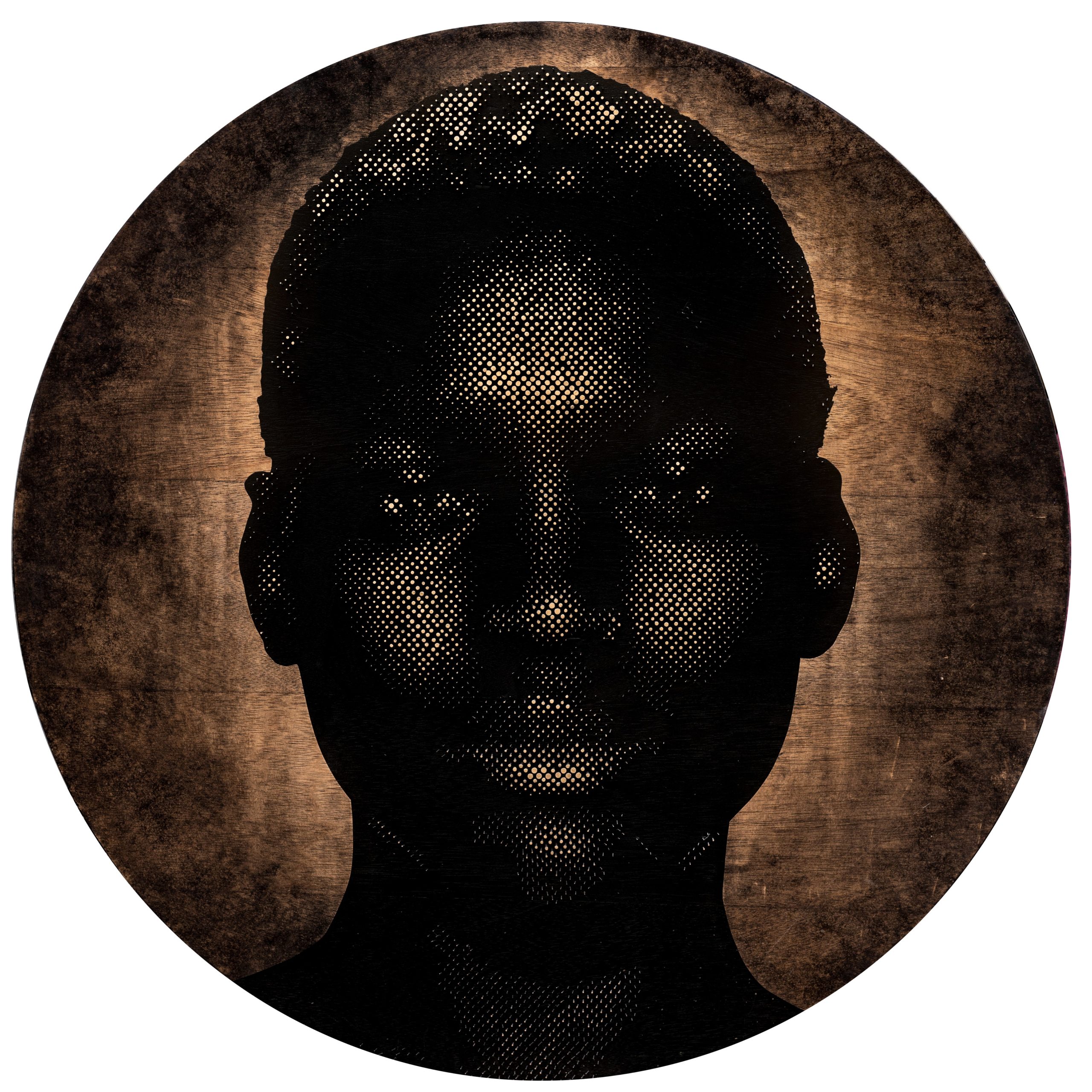
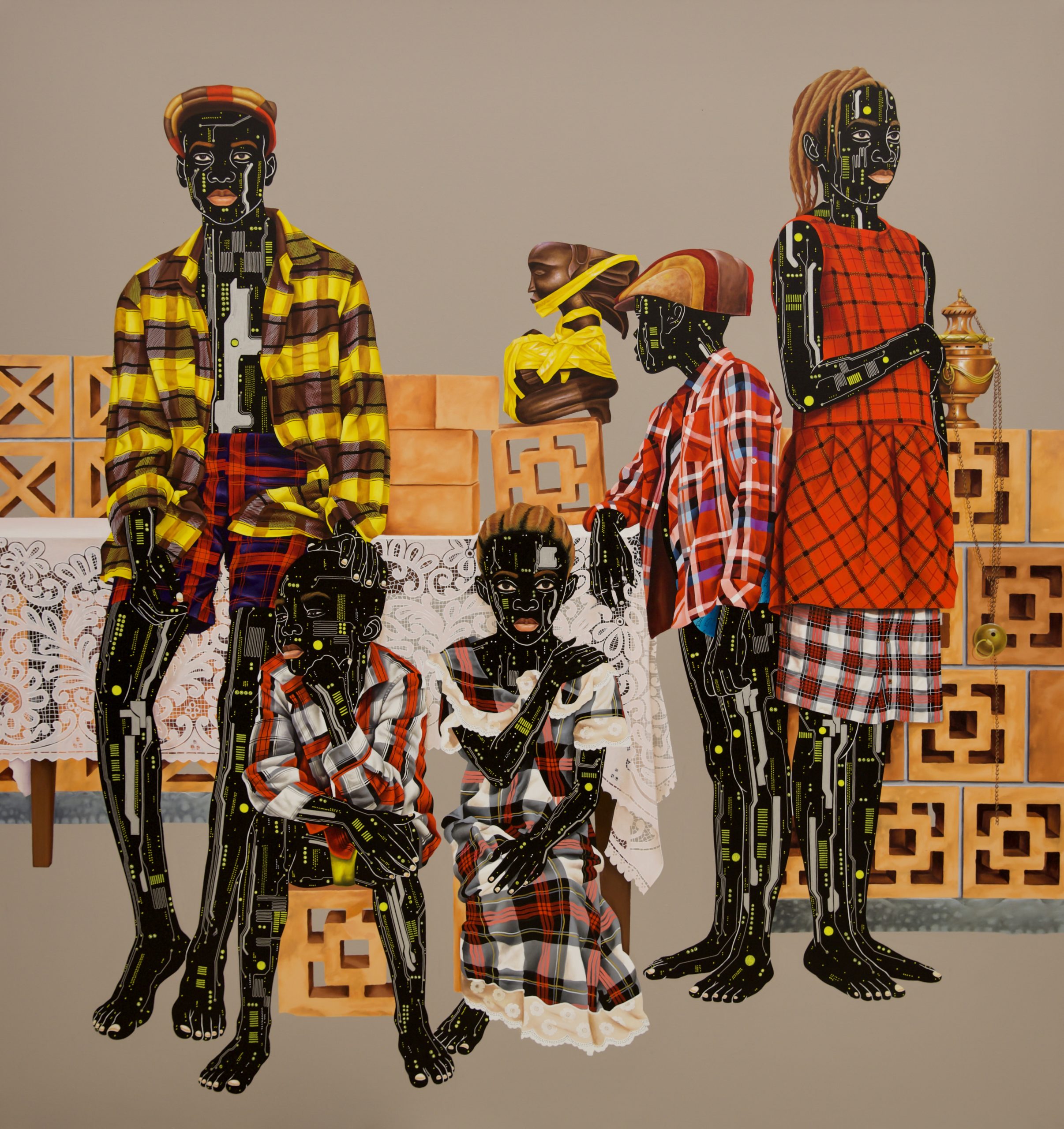
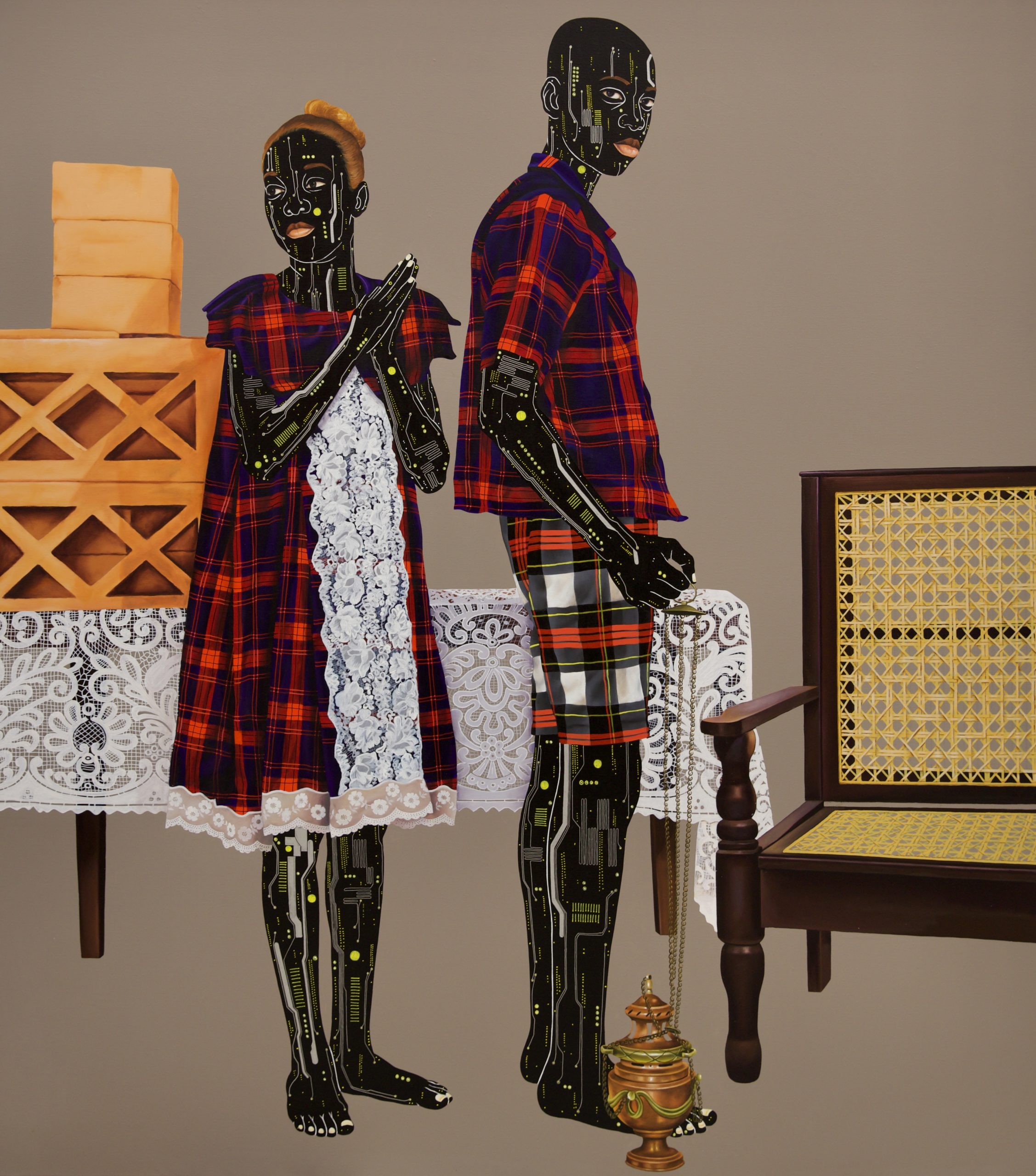
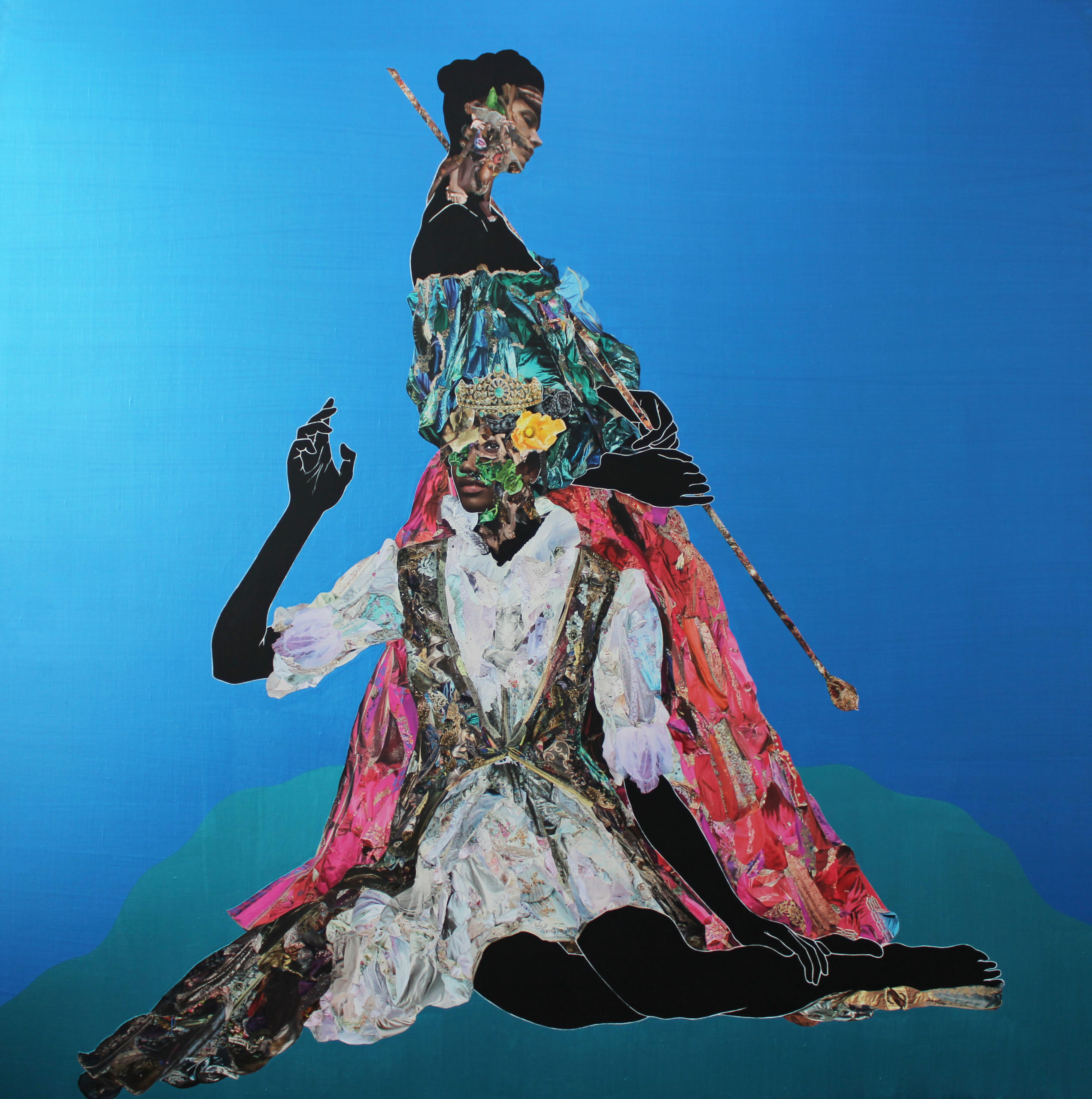
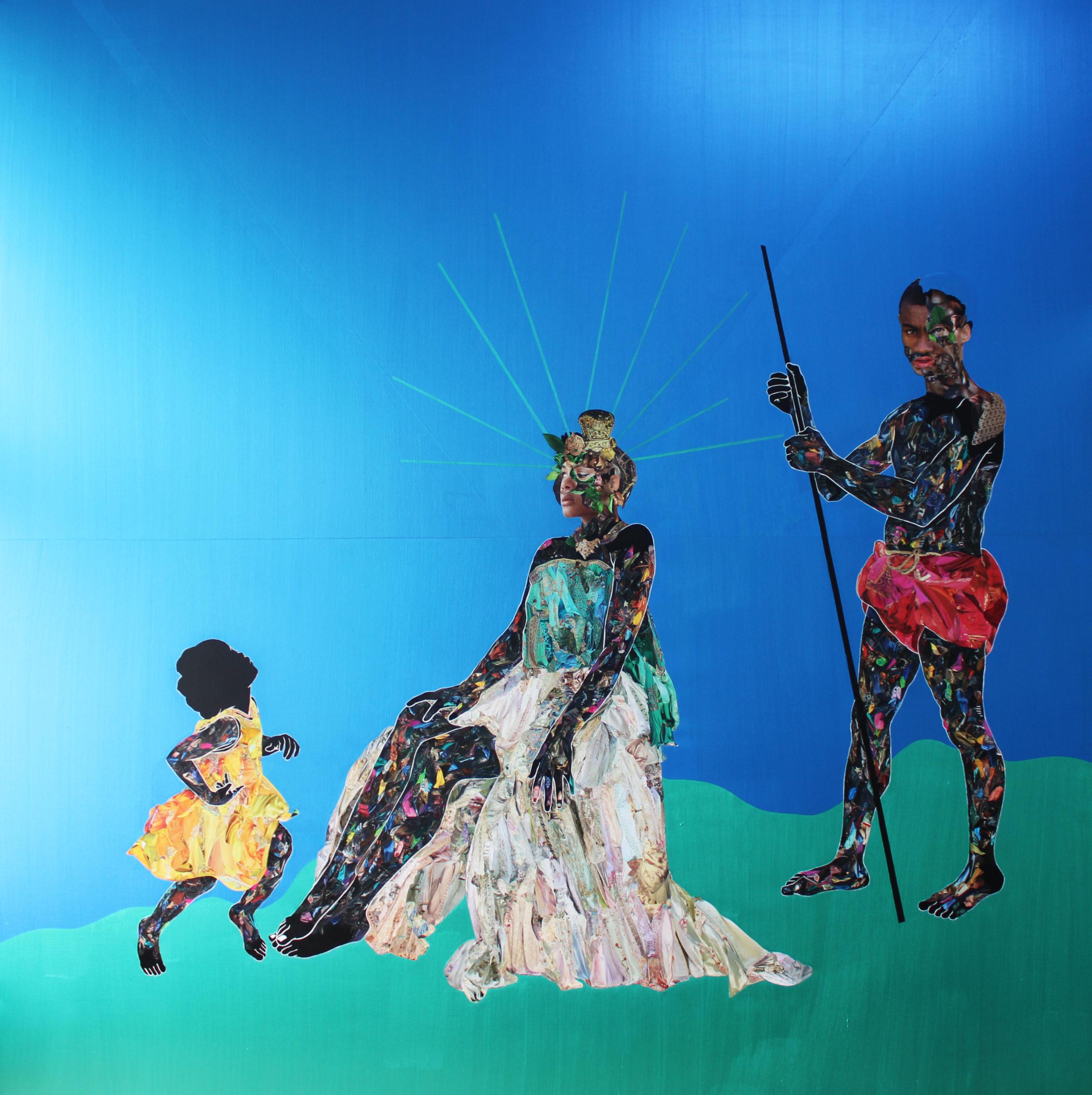
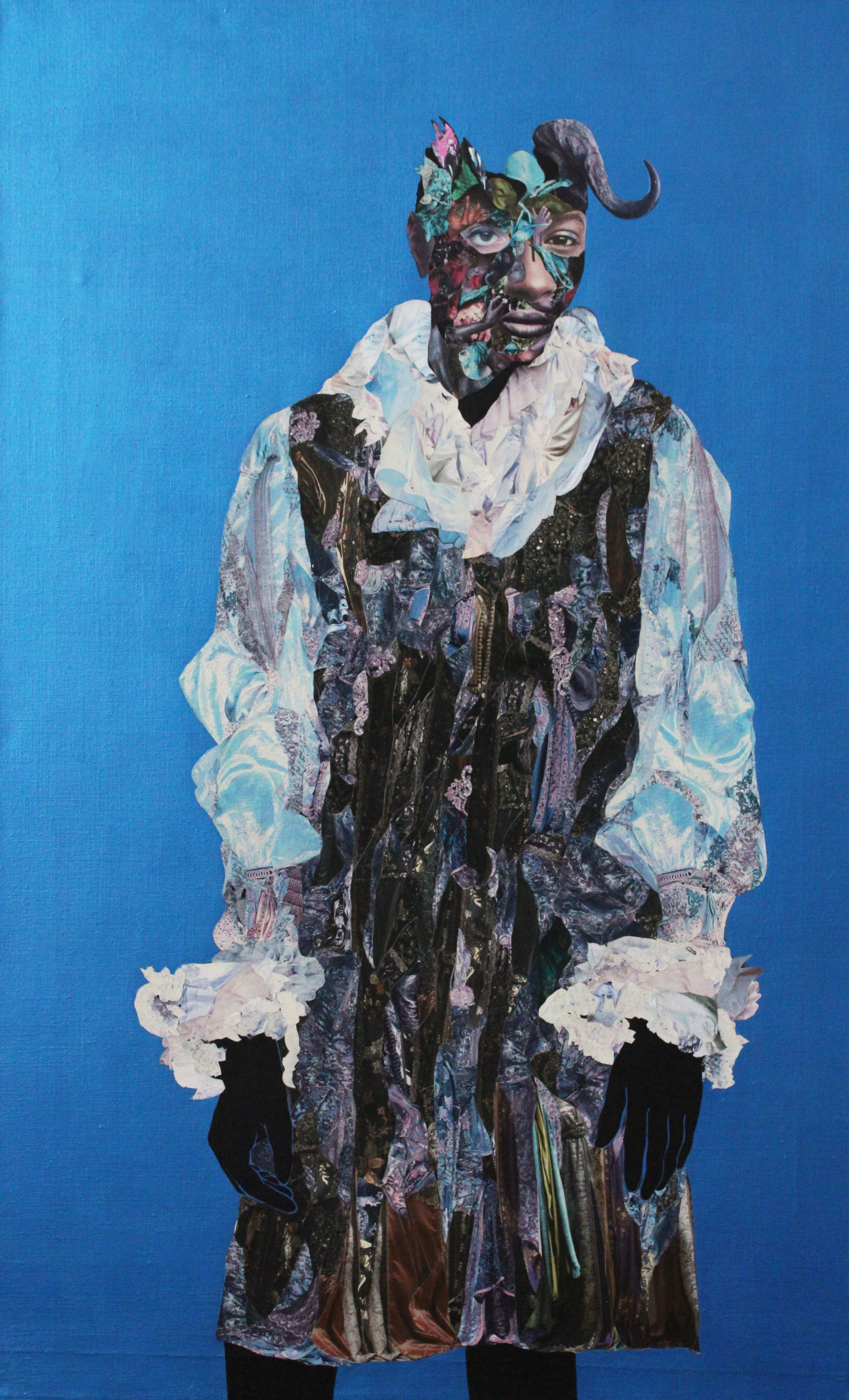

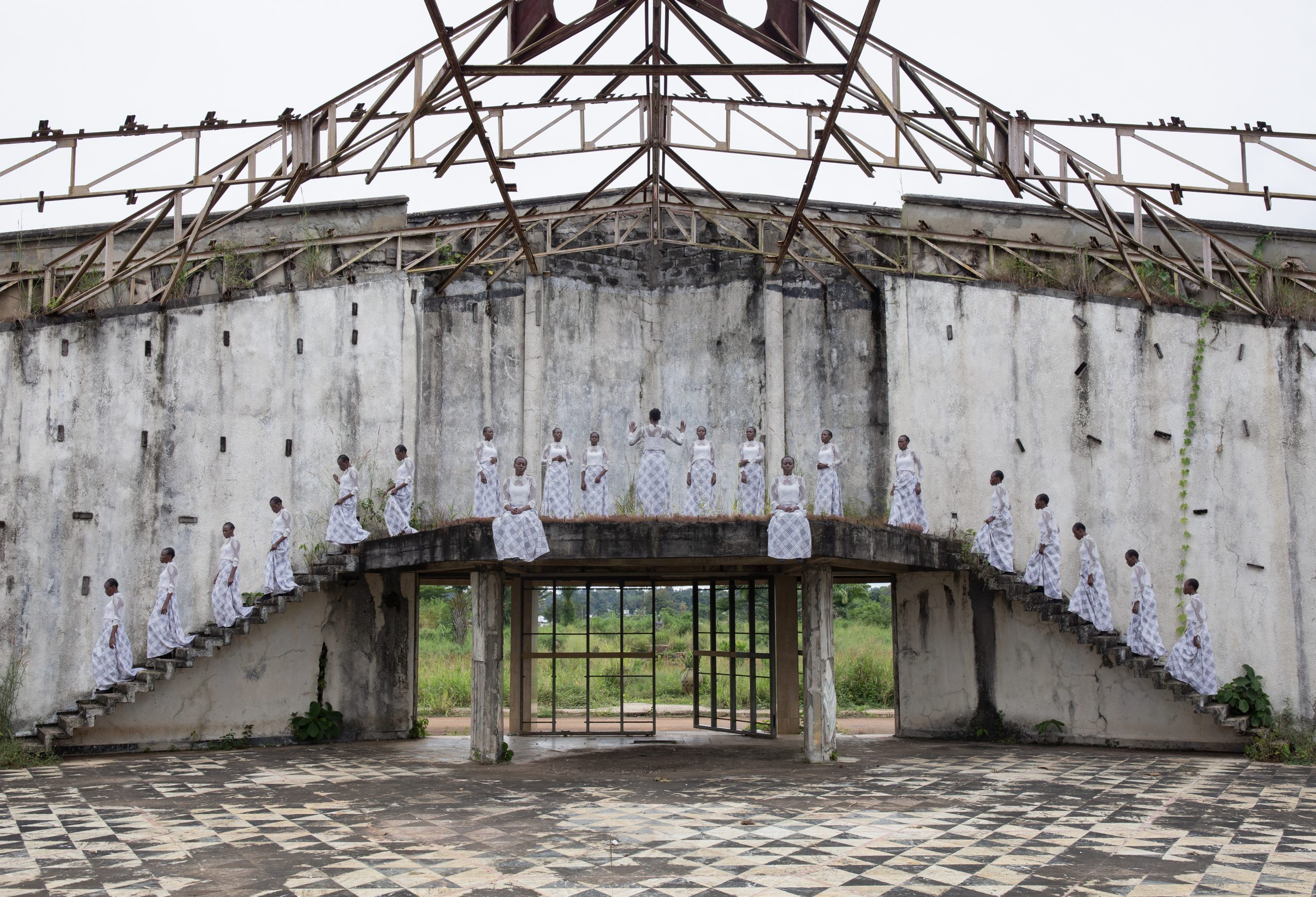

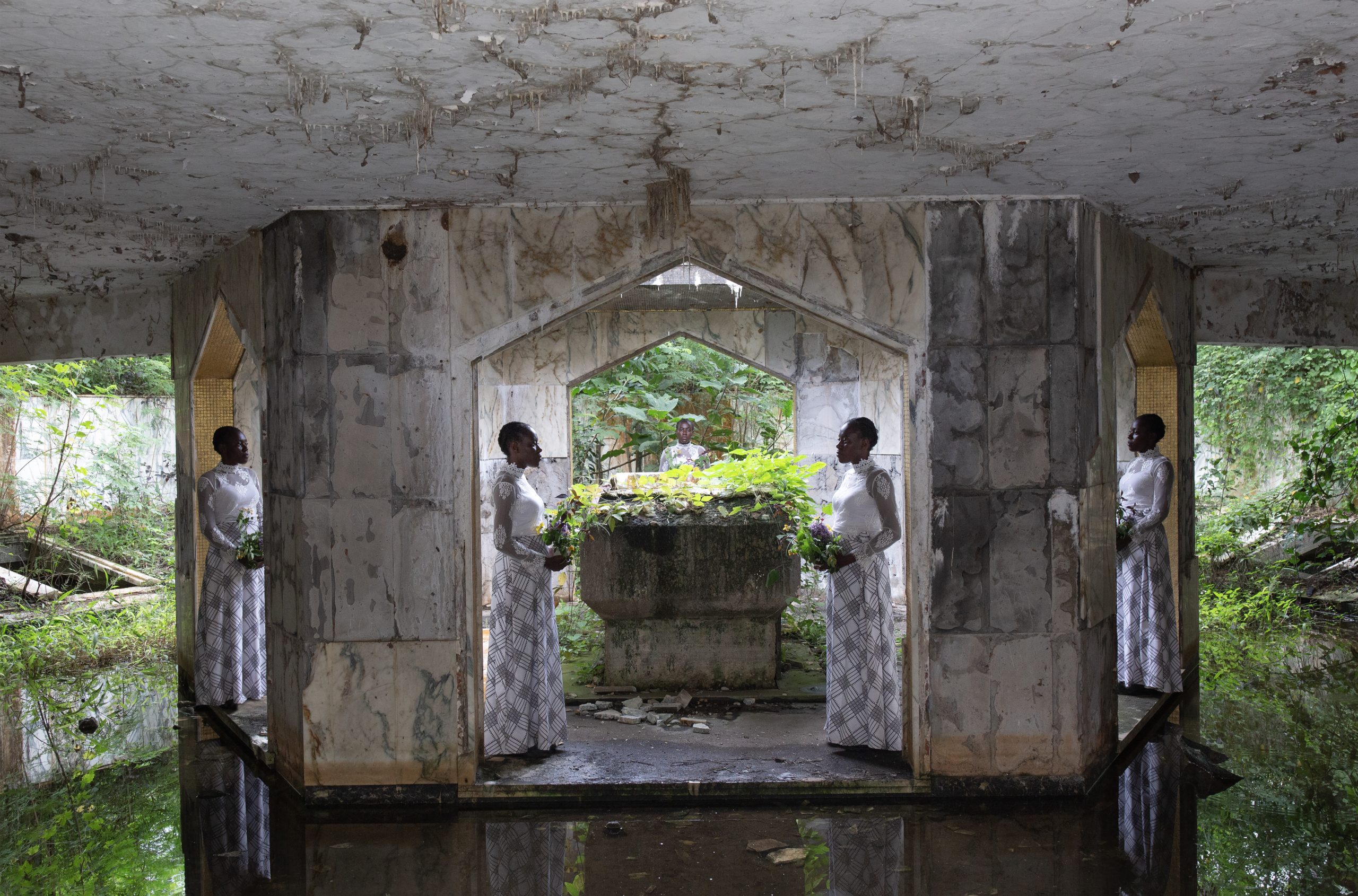
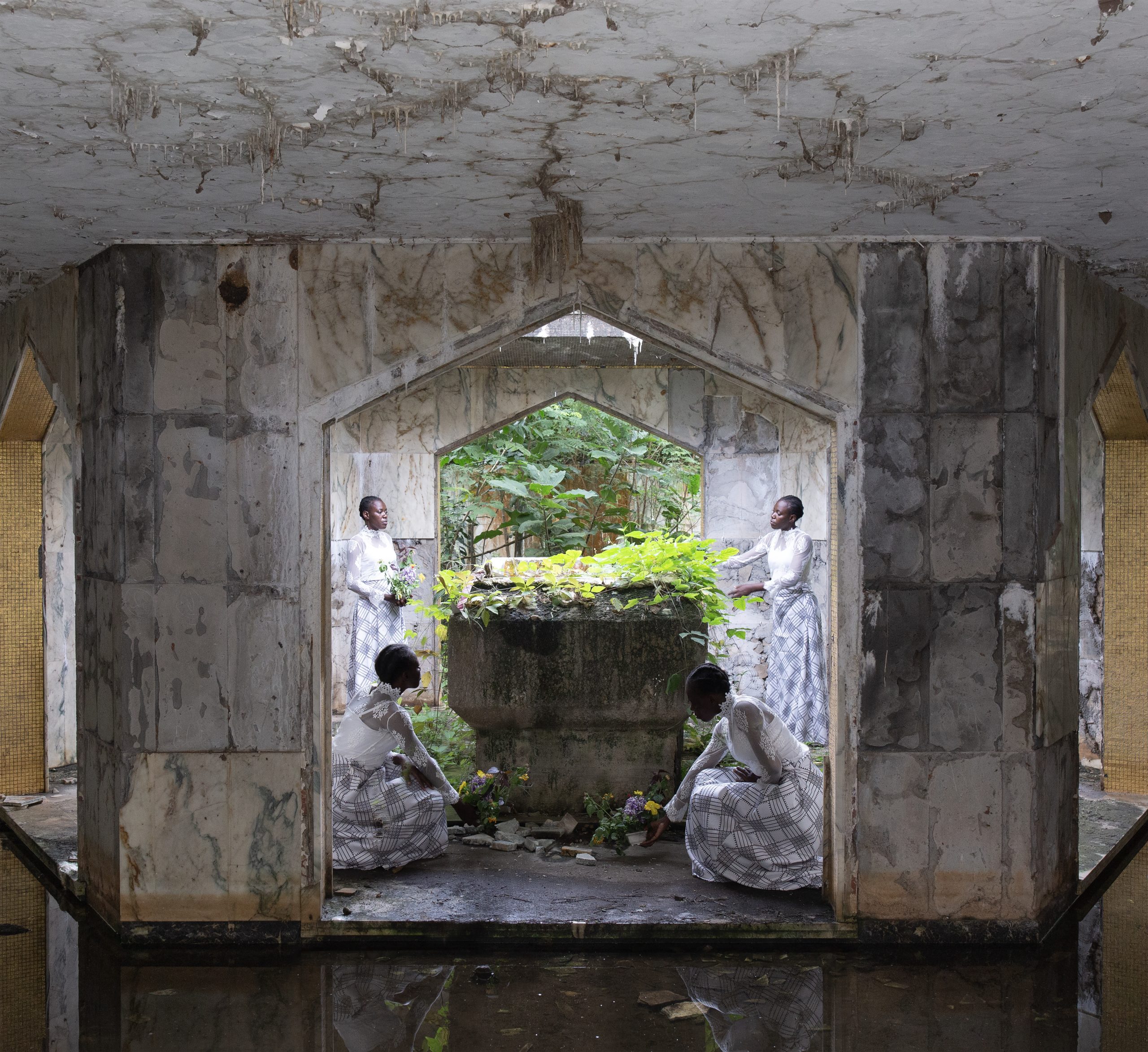

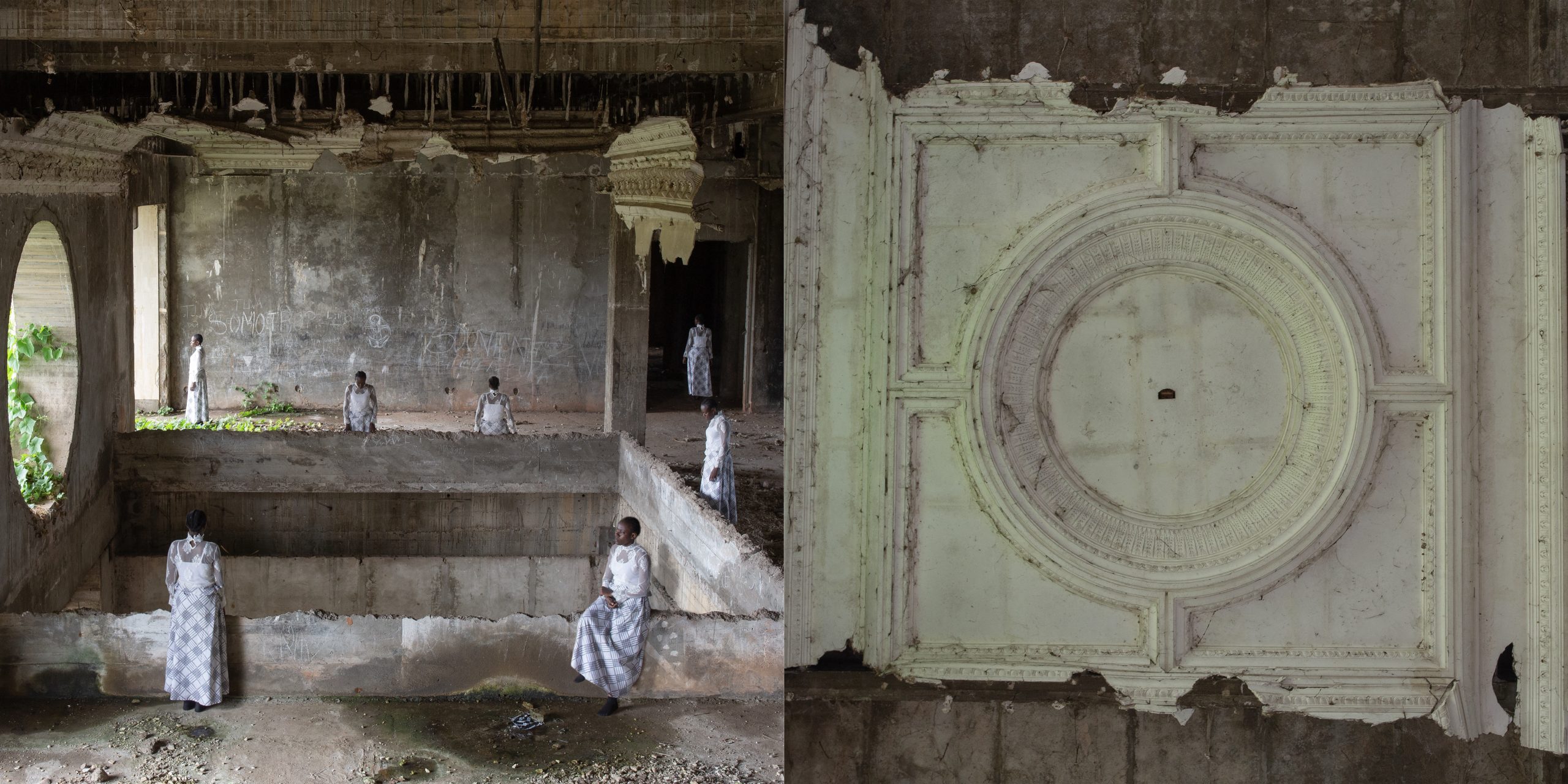
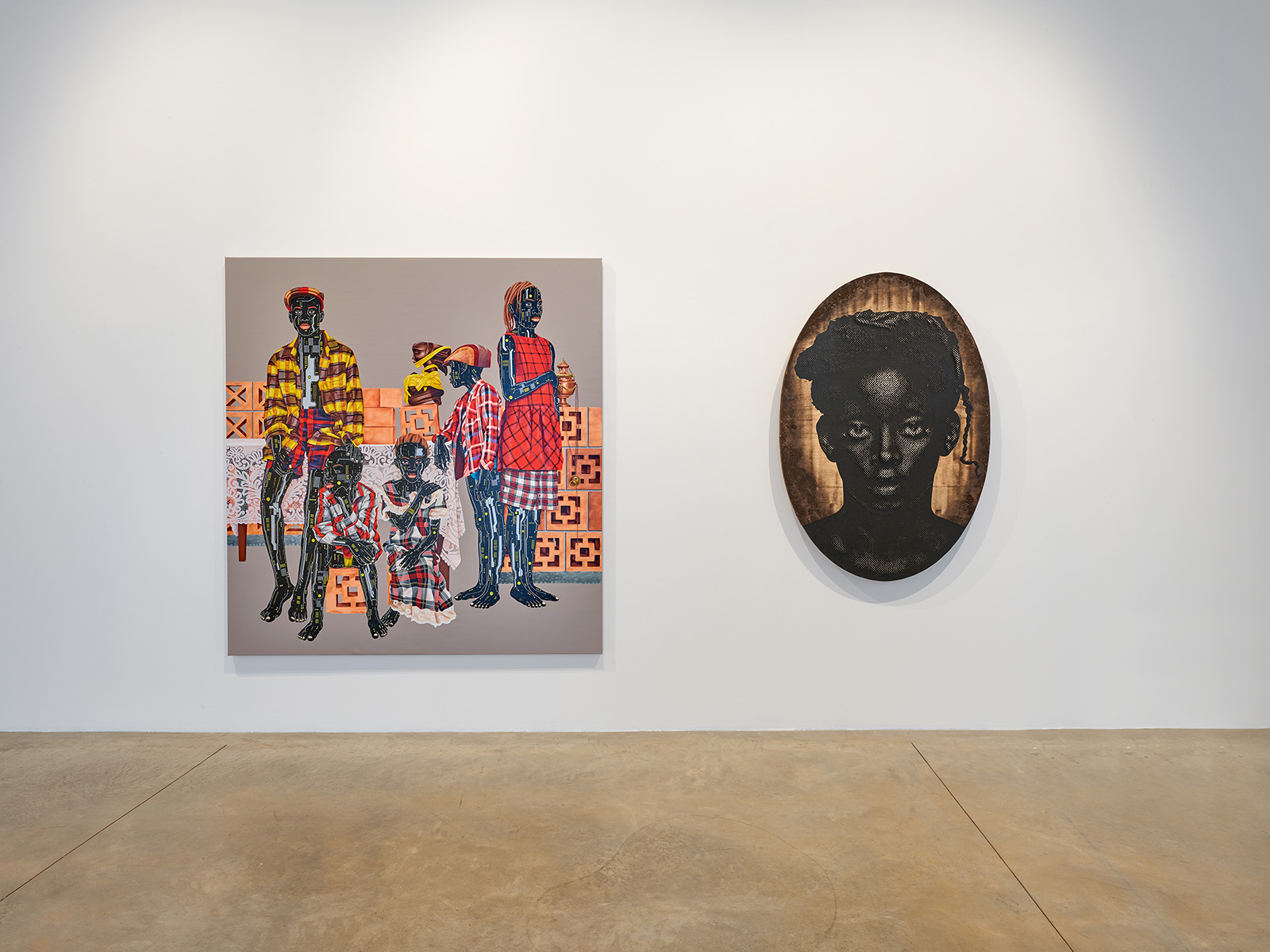
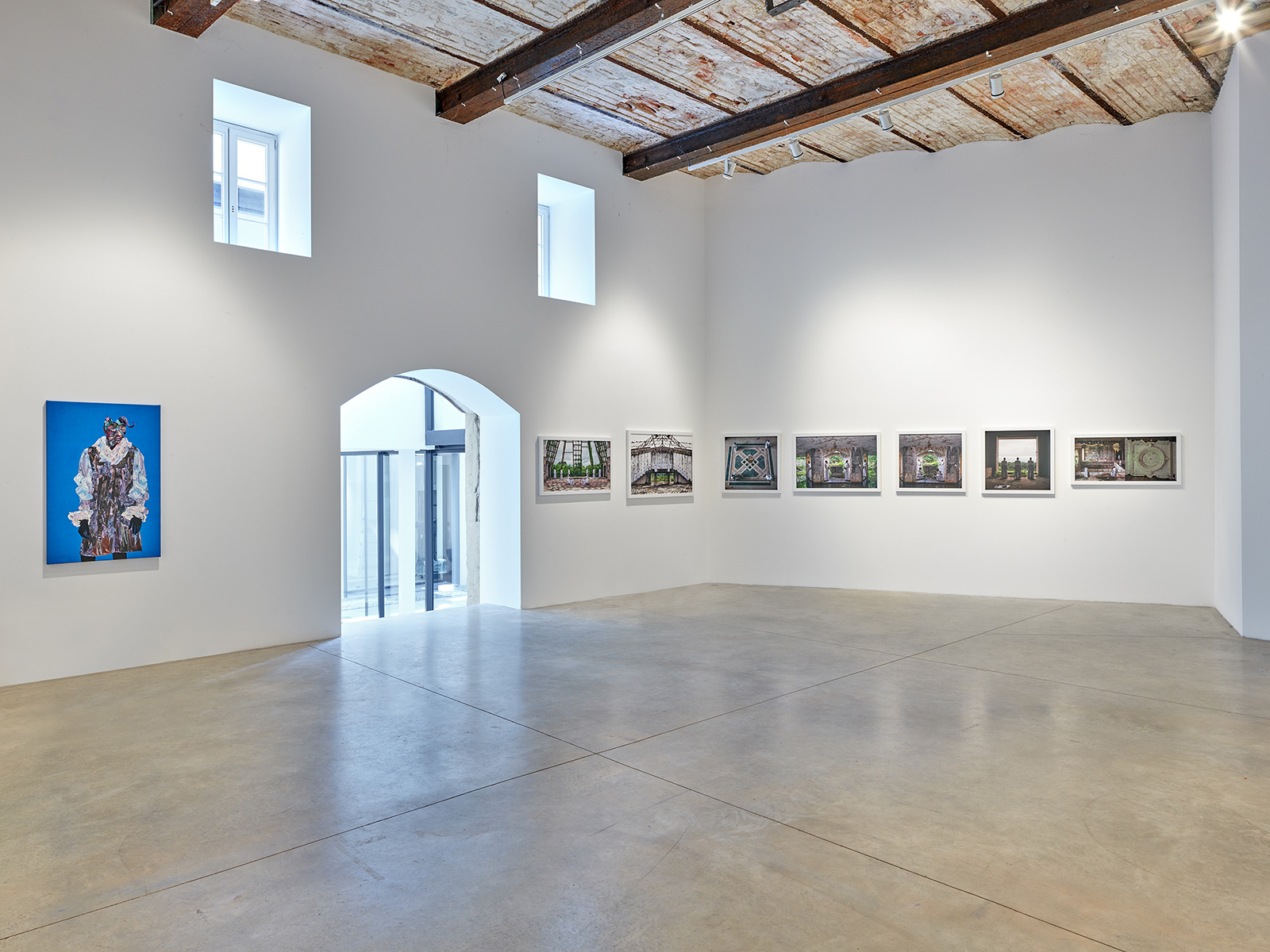
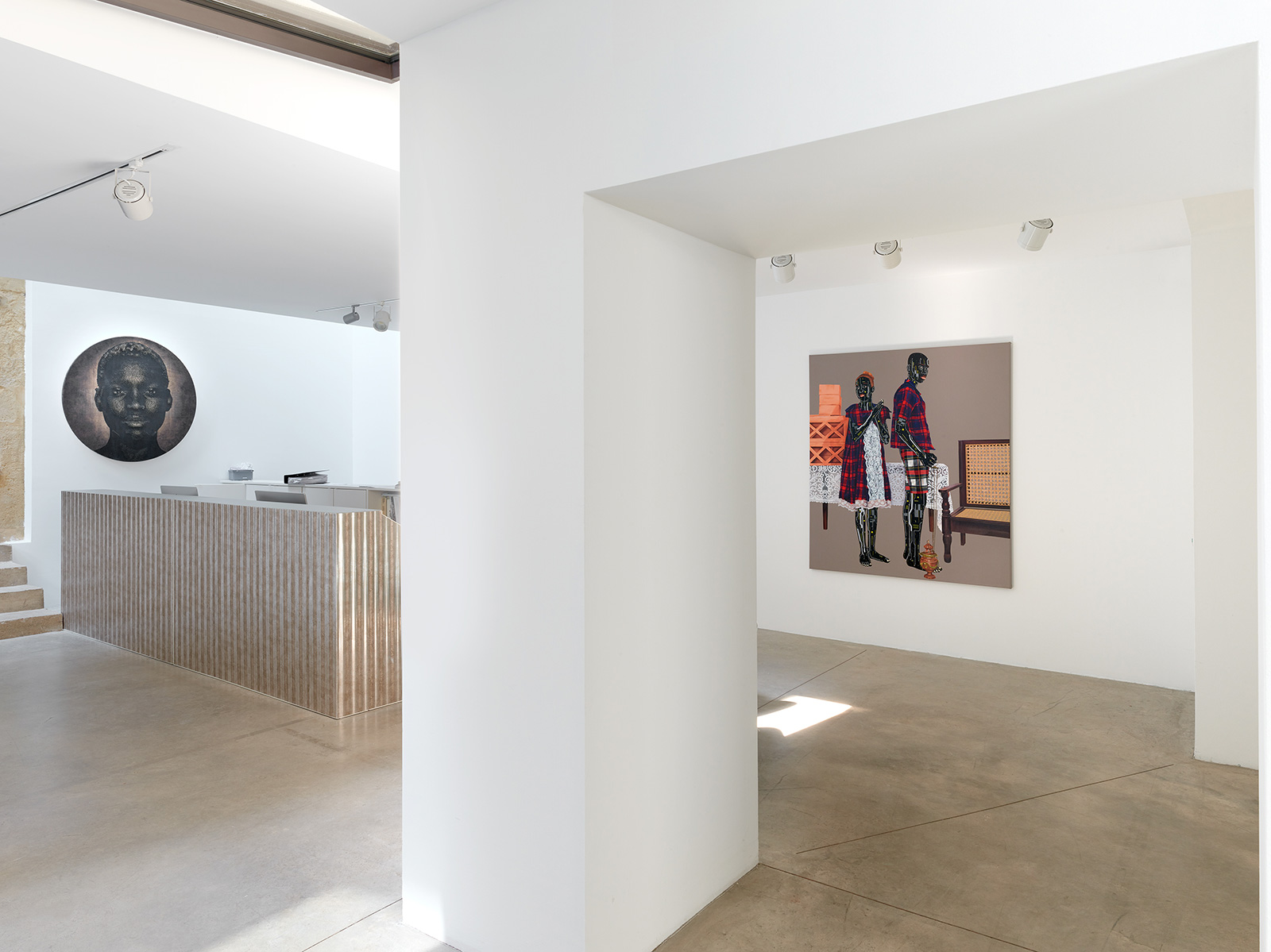
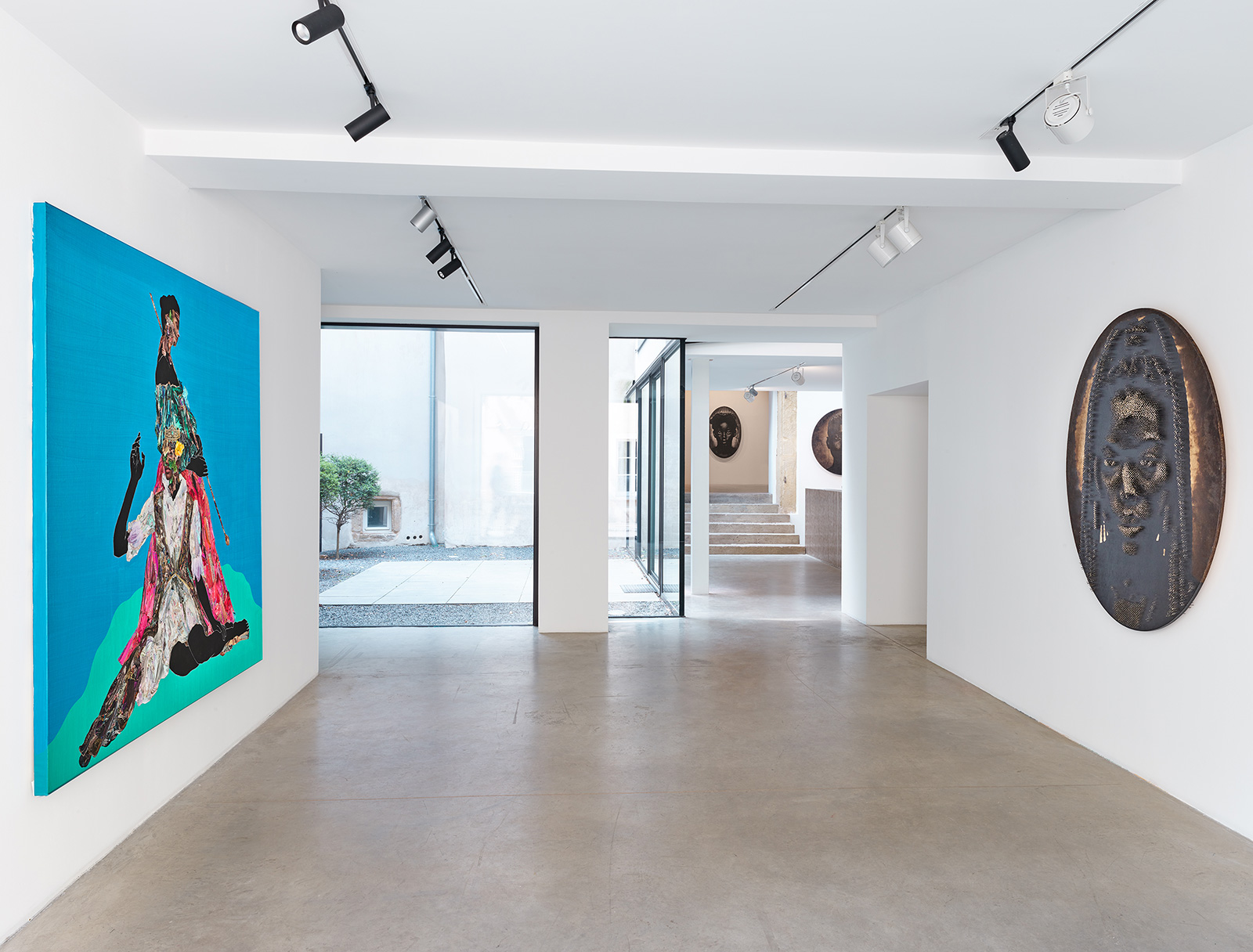

 UP
UP